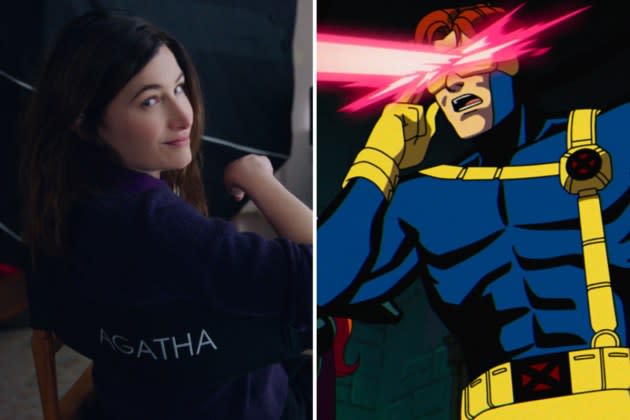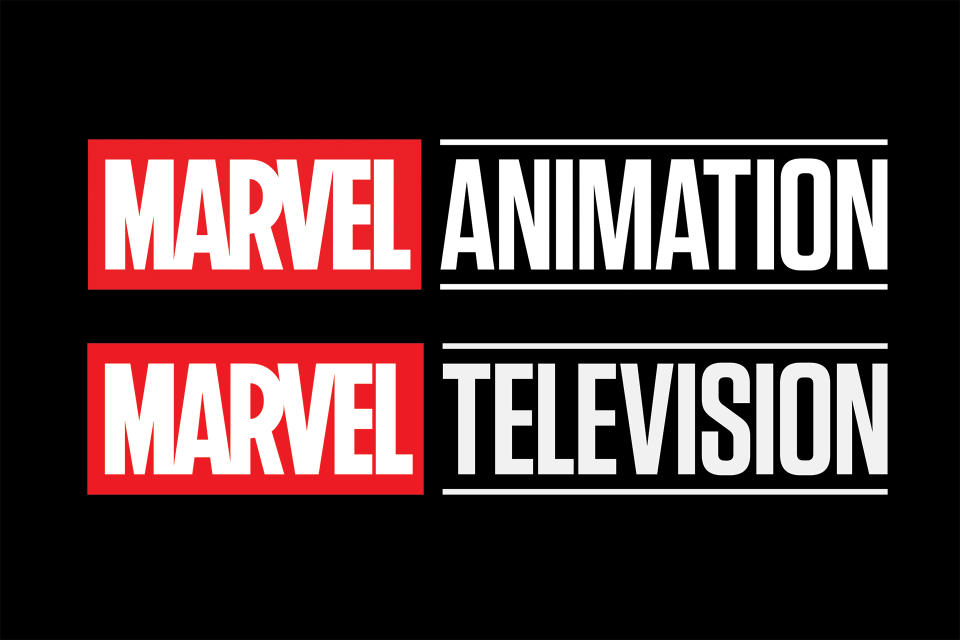Why Marvel Is Rebranding Its Television Shows to Eliminate the ‘Pressure’ to ‘Watch Absolutely Everything’
- Oops!Something went wrong.Please try again later.

When “Agatha All Along” premieres on Disney+ in September, the series will not open with the traditional Marvel Studios logo — as has been the case with (almost) every previous series from the Kevin Feige-led division since “WandaVision” premiered in 2021. Instead, the company is rebranding its streaming efforts as Marvel Television for live-action series and Marvel Animation for its animated shows, which launched with the just-concluded first season of “X-Men ’97.”
The rebrands are meant to help Marvel disabuse audiences from the pervasive impression that its content is one unified narrative experience that must be consumed in its totality.
More from Variety
“There was a lot of pressure post-‘Avengers: Endgame’ on the public to feel obligated to watch absolutely everything in order to watch anything,” says Brad Winderbaum, Marvel’s head of streaming, television and animation. “Part of the rebranding was a signal to the general audience that we’re creating a lot of options, and you can follow your tastes within this brand. Some will be more comedic, some will be more dramatic, some will be animated, some will be live-action. Marvel is more than just one thing — it is actually many different genres that just happened to coexist in a single narrative.”
When Marvel Studios first launched into streaming, Feige made a point to note that the shows were part of the Marvel Cinematic Universe and their storylines would be integrated with the feature films. The events of 2021’s “WandaVision” carried over into 2022’s “Doctor Strange in the Multiverse of Madness” and 2023’s “The Marvels,” for example, while the first season of “Loki” in 2021 fed into “Ant-Man and the Wasp: Quantumania” in 2023, which in turn led into the events of “Loki” Season 2 later that year.
Moving forward, however, Marvel intends to de-emphasize those connections, as some audiences have come to see the 46 titles that currently make up the MCU as a barrier of entry.
“The characters still live and breathe in the same universe, but the interconnectivity is not so rigid that you need to watch Project A to understand Project B,” Winderbaum says. “The hope is that, like the comics, you can just pop in anywhere and have a satisfying experience. We’re trying to dispel the idea that you need to do any kind of setup work to watch anything else.”

Marvel will also maintain the separate Marvel Spotlight banner meant to highlight one-off, character driven shows less connected to the MCU. The banner first launched with the gritty, adult-oriented series “Echo” in January and will continue with the upcoming series “Wonder Man” starring Yahya Abdul-Mateen II.
Eagle-eyed fans first noticed the Marvel Television rebrand during Disney’s Upfront presentation on May 14, when Marvel Studios presented first looks at “Agatha All Along,” “Ironheart” and “Daredevil: Born Again” with the new logo. In an ironic twist, the latter is a continuation of Netflix’s “Daredevil” series that was produced by a separate division of Marvel Entertainment called, yes, Marvel Television. That branch of the company — which produced shows like “Marvel’s Agents of S.H.I.E.L.D.” for ABC, “Legion” for FX and “The Gifted” for Fox — was shuttered in 2019 when Feige became chief creative officer of Marvel, and Marvel Studios began producing shows for Disney+.
Many of those shows garnered acclaim and Emmy nominations, especially for “WandaVision” and “Loki.” But the company’s decision to produce its streaming series like multi-episode feature films, matched with the dramatic increase in production, also reportedly led to rocketing budgets and patchy quality control. In turn, Disney CEO Bob Iger — who spearheaded the launch of Disney+ and the mandate to aggressively fill it with content — began publicly admitting that Marvel needed to reduce its output. In an earnings call on May 7, Iger put a number to it, saying that Marvel’s TV pipeline would decrease to “probably about two TV series a year instead of what had become four.”
Winderbaum says Iger’s announcement reinforced a course correction that was already well underway at Marvel, developing “multiple projects at once” for television but only moving forward with projects that show the most potential for success.
“We were already, as of two years ago, adapting our process from being, you know, fill the service as fast as possible no matter what, to a more considered approach,” he says. “I really like the idea of two shows a year, especially because we are developing more than we make. We used to treat the shows like the features where we’re gonna make a show and that’s it, we’re going to hit a release date, hell or high water. Well, it’s hard to do for a two hour feature, it’s even harder to do for, six, seven, eight, nine hours. So now we have a more traditional approach.”
And what’s more traditional than calling television “Television”?
Best of Variety
Sign up for Variety’s Newsletter. For the latest news, follow us on Facebook, Twitter, and Instagram.

